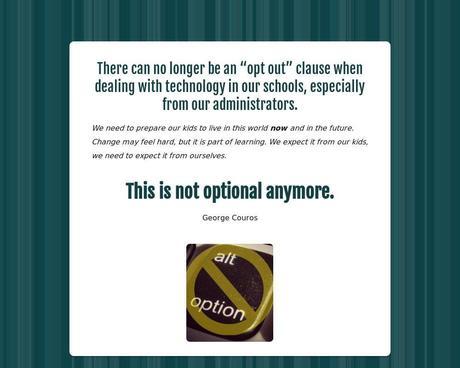I often use technology tools in my professional development presentations to staff, trying to model how they can be used in the classroom. However, sometimes teachers get the wrong impression and think I am trying to push this technology use on them, mandating them to use the tools and be masters of them before they unleash them upon students. My only intention is to give teachers ideas for technology use in their classroom, to make them aware of the electronic potential that's available for their students. I understand that technology is not appropriate for every lesson and every learning experience; however, it is my duty as a Director of Teaching & Learning to help teachers become aware of the tools that can help students show what stuff they have joined together to create their own understandings.
Further, teachers don't have to know how to use every single feature all of the technology tools their students use. One of the wonderful things about using technology in a classroom is the inherent problem-solving that comes along with students having to figure out how to use a tool on their own, helping them become those independent learners we all want them to be. One of the first things I learned as a 1:1 teacher is that showing students how to use a tool step-by-step to the entire class is a complete waste of time; students passively watching you do all the work doesn't teach students how to use the tool. Only students actually using the tool for themselves teaches them how to use the tool.
And the key to technology use in the classroom is just that--that students are using these tools on a regular basis, not the teacher. The real power of educational technology comes from student use, not from teacher use. Remember, students are the ones that have to do the work of learning, and that means students have to be the ones using technology to create, collaborate, and publish their work for feedback from a larger, more authentic audience than the teacher in the room. We have to prepare them for their world as they will know and interact with it and not the world in which we know and with which we are most comfortable.
This means that technology use in the classroom isn't just a nice add-on or a bonus after teaching a traditional and outdated curriculum that no longer serves the needs of today's students. It means that teachers can't wait to use technology until they are comfortable with it. As George Couros said,

Remember, this learning thing isn't about us and our technological and pedagogical comfort zone--it's about preparing students to be the learners they need to be right now and after they graduate.
It's not about us. It's about them.
